The Razer Blade 15 (2021) Review: Amped Up With Ampere
by Brett Howse on March 11, 2021 9:30 AM EST- Posted in
- Laptops
- Gaming
- Razer
- Razer Blade
- Ampere
Wireless
As with a lot of aspects of the Razer Blade 15, the company offers different wireless options depending on if you get the Base model or the Advanced model, but really both are top-tier Wi-Fi solutions. The Base model we are reviewing today has the Intel AX201 Wireless card, which was Intel’s 2020 card of choice. Featuring Wi-Fi 6 and Bluetooth 5.1, it comes on most good notebooks released in the last year. People who step up to the Advanced model of the Blade 15 will find themselves with Intel’s latest AX210 Wi-Fi card, which brings with it Wi-Fi 6E and Bluetooth 5.2. The main difference between Wi-Fi 6 and 6E is that 6E supports 6 GHz Wi-Fi. Future-proofed a bit more, but unless you live in an area where 5 GHz is a crowded spectrum, it is not a huge selling feature, and there are still relatively few wireless routers which offer 6 GHz support.
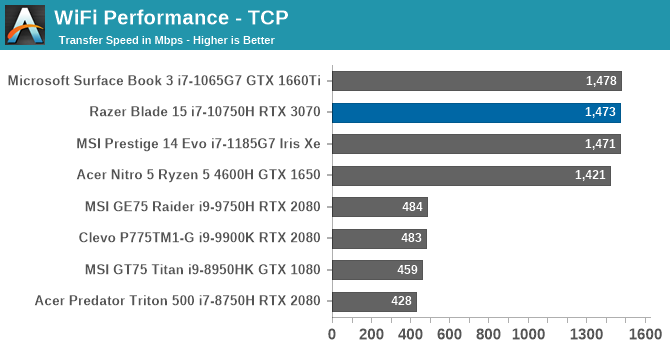
As is typical of the Intel AX201, speeds were amazing, and reliability was top-notch. Expectations are the AX210 will be equally as good, and in the PC space, there is really no competition for Intel wireless offerings at the moment.
Audio
One of the best aspects of Razer’s designs is that the place the speakers in a great location on either side of the keyboard. This offers excellent stereo separation, and without the loss of clarity that can occur with many notebooks where the speakers end up firing downwards.
Razer acquired THX in 2016, so it is not a surprise to see that they offer THX Spatial Audio on the Razer Blade. The software allows you to turn this feature on and off, as well as adjust dialog and the equalizer. Although it can’t work miracles with the tiny speakers found inside a laptop, it does bring a slightly wider soundstage, and a bit more clarity.
The speakers themselves though are middling at best. They do not get overly loud, although even at 100% volume the clarity is good. Peaking at around 78 dB(A) measured one inch over the trackpad, the maximum output is fairly average. As with any notebook, there is a huge drop off on the lower end of the audio spectrum, since the speakers are unable to produce the required low frequencies.
Razer does support 7.1 audio over the HDMI port though, so you could output this notebook to a proper set of speakers if required.
Thermals
Packing performance into a thin laptop like the Razer Blade is always a challenge when it comes time to manage the heat output. NVIDIA, for their part, have been offering Max-Q versions of the previous couple of generations of GPUs to help them fit inside smaller chassis, and while there is no Max-Q designation (yet) for the new RTX 30-Series laptop GPUs, all of the GPUs in the lineup offer a wide array of Thermal Design Power limits that the manufacturer can set.
Razer also offers some cooling choices through the Synapse software, which allows the ramp level of the fans to be adjusted, or to just set the fan speed manually. For our testing, we left it in the default Auto mode.
To see how well the Razer Blade 15 handles its primary purpose – gaming – Shadow of the Tomb Raider was played for over an hour at QHD resolution and with the highest settings. Performance data from the laptop was logged.
The Razer Blade 15 has no issues with the GPU / CPU combination. There was no evidence of any throttling occurring, and the GPU was rock-solid for the entire run. The GPU averaged about 1380 MHz, with a temperature of just 74°C. The CPU temperature was even a bit lower, at only 71°C. GPU-Z also logs the total board power, which, if accurate, showed just 90 Watts of draw. The RTX 3070 is rated at 80-125 Watts, so the Razer Blade 15 is in the range, but on the lower end of the scale.
The laptop cooling solution handled the RTX 3070 with no issues, and even after an hour, was barely over 50 dB(A) measured one inch over the trackpad. Temperatures were low, and noise was not excessive. For a thinner device like this, that is not always the case, so Razer has done a nice job engineering their cooling system.
Software
Razer does not ship any extra software with the Razer Blade 15 other than their own applications, which is fantastic. Companies putting trial-ware on notebooks, even in the premium segment, is still a thing, so it is always nice to get a notebook with a clean Windows 10 image. The software they do include is for manipulating the Razer Blade itself, and that is of course their Synapse software.
The first compliment to Razer is that they do not require an account to use the Synapse software. You can sign in, which saves your settings to Razer’s servers to allow for more portability, but it is in no way a requirement, which is excellent.
The software offers a lot of functionality. The most important is likely the Performance section, where you can choose the power profile of the notebook, and whether you want to optimize for GPU or CPU performance. It also is where you would switch the multiplexer from the integrated GPU to the discrete GPU.
Lighting is also a key part of the Razer experience, and the Razer Blade of course allows you to connect and control any Razer Chroma powered devices. On the Razer Blade itself, the keyboard lighting is customizable through the software. The Base model offers just a single zone of RGB backlighting, but the Advanced model offers per-key RGB settings.
You can set macros here as well, and set profiles that run based on individual games, so you can have a custom lighting for the laptop, as well as any connected Chroma devices, which fires up any time that game is launched.
The software has come a long way over the years and is very well thought out. It does exactly what you need it to do, without ever getting in the way.


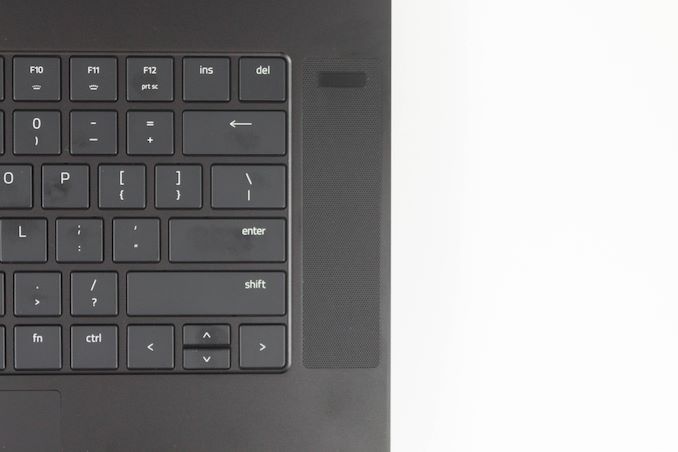
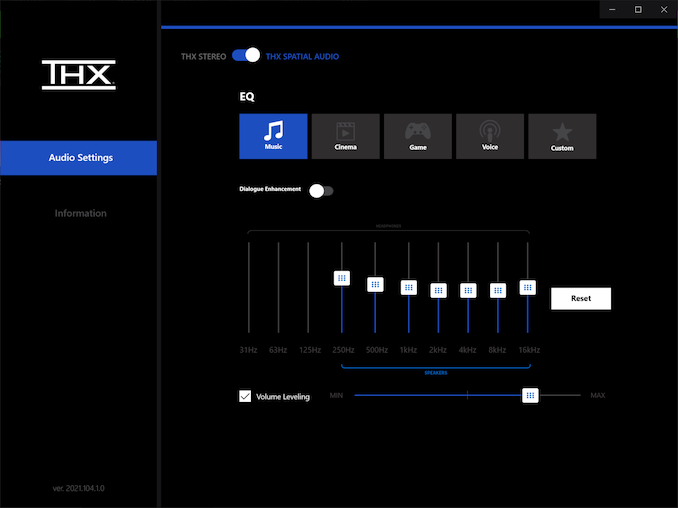
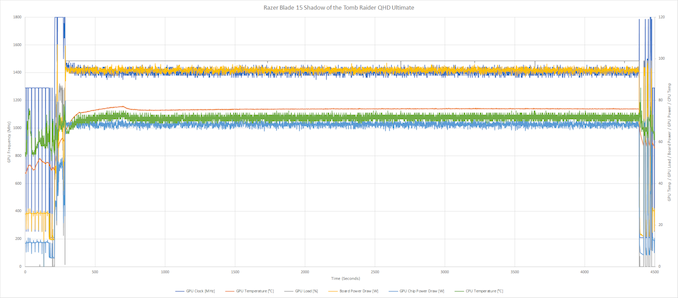
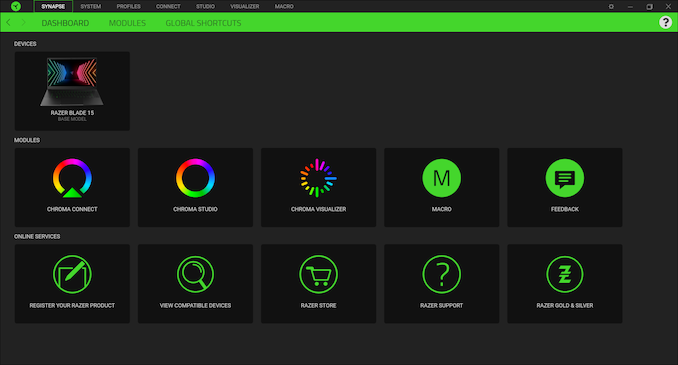
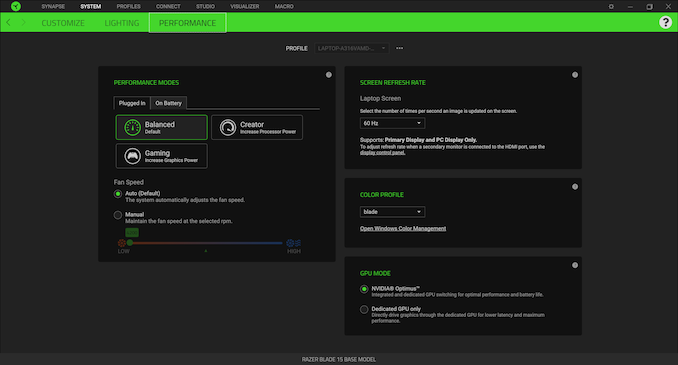
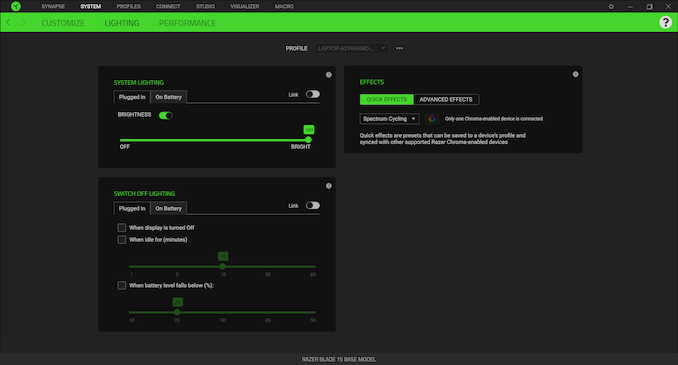
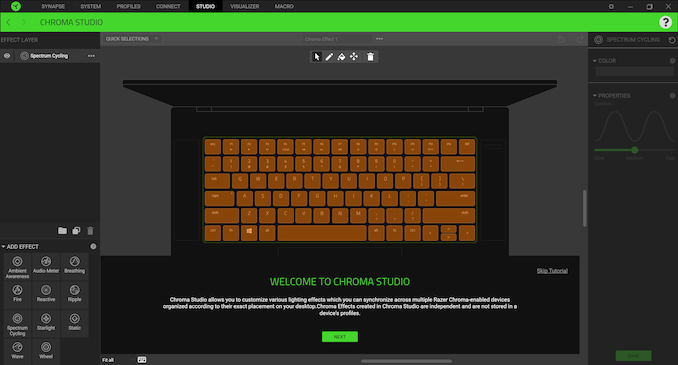








44 Comments
View All Comments
cknobman - Thursday, March 11, 2021 - link
As much as I love Razor I dont see much reason to buy one of these over a ROG Zephyrus G15 GA503.If Razor cannot start incorporating AMD processors they are going to continue to lose sales.
Alistair - Thursday, March 11, 2021 - link
yeah no Ryzen 5000 is a huge bummer for such a premium priced laptopNetmsm - Thursday, March 11, 2021 - link
totally agreequiksilvr - Friday, March 12, 2021 - link
Not only that this isn't even 11th gen Intel. These "10th gen" chips are still on the 14nm lithography and still on Thunderbolt 3 which is not as robust as Thunderbolt 4 for eGPUs since the controller is built into the CPU and you get a lot less less latency. And yes, it is a MASSIVE difference. https://youtu.be/42o5tPE1uFA?t=224Agent Smith - Thursday, March 11, 2021 - link
AgreeDolda2000 - Thursday, March 11, 2021 - link
I think it will be easier for these high-end brands to motivate AMD processors when AMD start adding built-in Thunderbolt support.Though I guess that being said, I'm not sure what their excuse would be for not just adding a Thunderbolt chipset for a laptop in this kind of price range.
bluefish111 - Wednesday, March 24, 2021 - link
I'm not sure if you guys are aware but during negotiations im sure intel pays razer or charges them less than market price so that they keep intel inside* i think there was an anti competitive case against intel who did the same with dell back in the day I'm sure they still practise the same thing but indirectlySpikke - Tuesday, April 20, 2021 - link
I recently purchased a Blade because you can get the 2020 models for good prices right now, but I really do agree with you regarding AMD. Definitely would have preferred to purchase it with a Ryzen CPU.RSAUser - Thursday, March 11, 2021 - link
Without a price and power draw, the GPU comparison in laptops is a bit meaningless.The power draw/performance isn't much different, and the price went up, this new generation doesn't look that great.
The more interesting stuff is the external enclosure support that some manufacturers did which if standardized can make a very compelling argument as can then allow for higher GPU power draw, swapping it when better ones come out, and maybe thinner/lighter laptops in that class.
Srikzquest - Thursday, March 11, 2021 - link
Unless you need a webcam, I don't see a reason to purchase any other laptop for gaming other than Asus Zephyrus. Unless there is some serious bribing involved or just may be AMD is not able to scale enough to meet the market demand, I don't know why these laptop brands are not supporting AMD processors. Its funny that even if someone supports them, they are not the latest generation ones or are gimped somewhere on the spec sheet and because of this, most consumers think AMD ones are not great or don't exist at all and they avoid them. I don't have anything against Intel but this is not how competition should work and consumers are not getting the best ones out there.